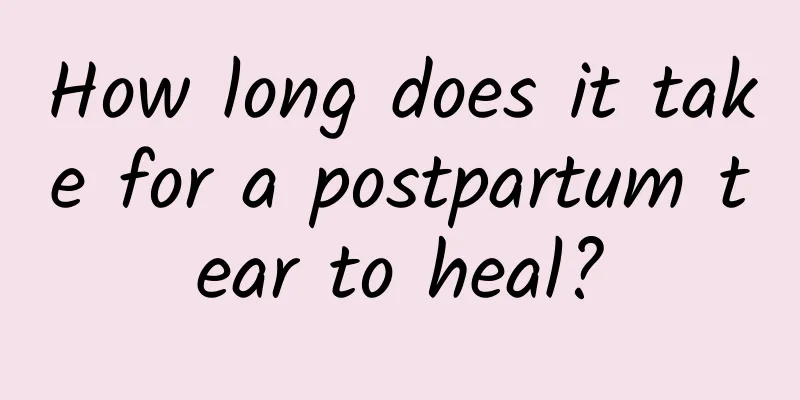How to treat a herniated disc

|
Intervertebral disc herniation is a common disease nowadays, and the number of patients is very large. Suffering from intervertebral disc herniation will affect physical health, especially when the condition worsens if not treated in time, it may even affect the patient's normal life. But how should intervertebral disc herniation be treated? This is a problem that everyone generally concerns. The following will introduce the treatment methods of intervertebral disc herniation. 1. Non-surgical treatment Most patients with intervertebral disc herniation can be relieved or cured through non-surgical treatment. The treatment principle is not to restore the degenerated and protruding intervertebral disc tissue to its original position, but to change the relative position of the intervertebral disc tissue and the compressed nerve root or partially retract it, thereby reducing the pressure on the nerve root, loosening the adhesion of the nerve root, eliminating the inflammation of the nerve root, and thus alleviating the symptoms. Non-surgical treatment is mainly suitable for: 1. young patients, first-time patients or patients with a short course of illness; 2. patients with mild symptoms that can be relieved by themselves after rest; 3. patients with no obvious spinal stenosis on imaging examination. (1) Absolute bed rest: When the disease first occurs, you should strictly rest in bed, and emphasize that you should not get out of bed or sit up to urinate or defecate. This will achieve better results. After 3 weeks of bed rest, you can get up and move around while wearing a waist belt for protection, and do not bend over or hold objects for 3 months. This method is simple and effective, but difficult to stick to. After remission, you should strengthen your back muscle exercises to reduce the chance of recurrence. (2) Traction therapy uses pelvic traction to increase the width of the intervertebral space, reduce the intradiscal pressure, retract the protruding disc, and reduce stimulation and compression on the nerve roots. It needs to be performed under the guidance of a professional doctor. (3) Physical therapy and massage can relieve muscle spasms and reduce pressure in the intervertebral disc, but be aware that violent massage can aggravate the condition and should be used with caution. (4) Corticosteroids Epidural injection of corticosteroids is a long-acting anti-inflammatory agent that can reduce inflammation and adhesions around nerve roots. Generally, long-acting corticosteroid preparations + 2% lidocaine are used for epidural injection once a week, 3 times as a course of treatment, and another course of treatment can be used after 2-4 weeks. (5) Chemical nucleus pulposus dissolution uses collagenase or papain, which is injected into the intervertebral disc or between the dura mater and the protruding nucleus pulposus to selectively dissolve the nucleus pulposus and annulus fibrosus without damaging the nerve roots, thereby reducing the pressure in the intervertebral disc or reducing the size of the protruding nucleus pulposus, thereby alleviating symptoms. However, this method carries the risk of allergic reactions. 2. Percutaneous nucleotomy/laser vaporization of the nucleus pulposus Through the use of special instruments, the intervertebral space is entered under X-ray monitoring, and part of the nucleus pulposus is crushed, sucked out or vaporized by laser, thereby reducing the pressure within the intervertebral disc and relieving symptoms. It is suitable for patients with bulging or mild herniation, but not suitable for patients with lateral recess stenosis or obvious herniation, or those whose nucleus pulposus has prolapsed into the spinal canal. 3. Surgical treatment (1) Indications for surgery: ① Patients with a history of more than three months and ineffective conservative treatment or those with effective conservative treatment but frequent relapses and severe pain; ② Patients with first attack but severe pain, especially with obvious symptoms in the lower limbs, who have difficulty moving and sleeping and are in a forced posture; ③ Patients with combined compression of the cauda equina; ④ Patients with single nerve root paralysis, accompanied by muscle atrophy and decreased muscle strength; ⑤ Patients with combined spinal stenosis. (2) Surgical method: Through a posterior lumbar incision, partial resection of the lamina and articular processes, or intervertebral disc resection through the interlaminar space. For central disc herniation, laminectomy is performed followed by epidural or intradural discectomy. Patients with lumbar instability and lumbar spinal stenosis require spinal fusion surgery at the same time. In recent years, minimally invasive surgical techniques such as microdiscectomy, microendoscopic discectomy, and percutaneous transforaminal endoscopic discectomy have reduced surgical damage and achieved good results. To summarize, there are three ways to treat intervertebral disc herniation: non-surgical treatment, percutaneous nucleotomy and surgical treatment. Among them, non-surgical treatment methods include absolute bed rest, traction therapy, physical therapy and massage, epidural injection of corticosteroids, and chemical nucleolysis. Faced with so many treatment options, it is not easy to choose the one that suits you, so you must carefully consider all aspects. |
<<: Adverse reactions to varicella vaccine
>>: Can thrush heal on its own?
Recommend
The root cause of body odor is dampness and heat
Body odor is quite common in our daily life, and ...
What are the treatments for tinnitus?
Tinnitus is an ear disease and one of the most co...
Which is better, a mud mask or a paper mask?
Facial masks are one of the most important ways f...
The efficacy and function of Lingzhi Beiqi water
When it comes to wild Ganoderma lucidum, everyone...
Feeling of breath stuck in throat
If you feel that there is bad breath stuck in you...
What color is ovulation bleeding? Let you know in detail!
Women will experience some physiological changes ...
Female urethral pain always want to go to the toilet
If female friends experience urinary pain and alw...
How long does it take for the effect of Chinese medicine to disappear after stopping taking it?
Being sick can cause great damage to people's...
What are the best treatments for lumbar herniation?
Lumbar spine problems are a disease problem that ...
How does anorexia develop? Causes of anorexia
Many patients don’t understand why they suffer fr...
Can acupuncture remove melasma?
Chloasma is generally the most common skin diseas...
Introduction to Chinese Herbal Medicine Polygonatum
There are many types of Chinese herbal medicines....
Does hcg rise during ovulation?
The ovulation period is the time when the egg is ...
Causes of back pain, 4 reasons to know early
Back cold pain is mostly caused by catching a col...
Helicobacter pylori C13
Both carbon 13 and carbon 14 detection methods ar...









